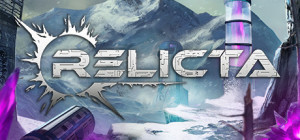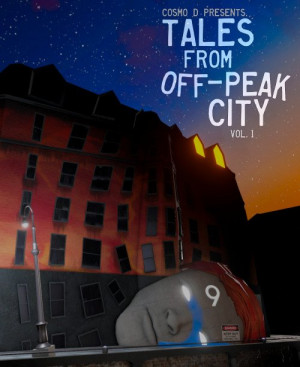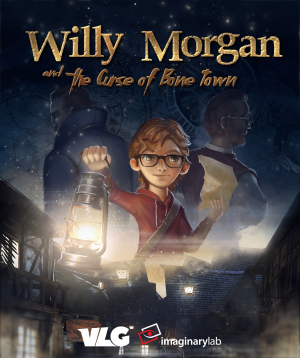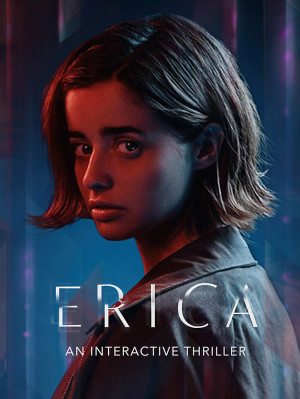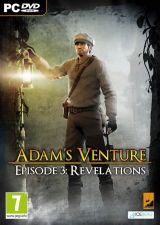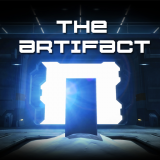Review for Relicta
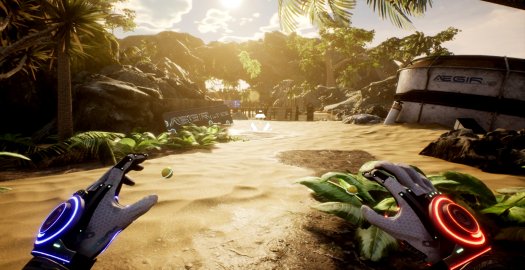
Note: Since time of writing, two additional missions, Aegir Gig and Ice Queen, have been released as free DLC. This review is based solely on the original version of the game.
When Portal was released in 2007, it was the breakout title for a burgeoning new adventure sub-genre of environmental physics-based puzzlers. Since that time, there have been any number of games that have taken influence from Valve’s acclaimed series. Mighty Polygon’s Relicta is one such title, and it delivers a challenging, highly polished, visually attractive experience of not inconsiderable length that’s sure to please those looking to scratch that similar puzzling itch.
Set a century from now in 2120, Relicta takes place in Chandra Base, a scientific research facility established on the surface of the moon. The base was originally constructed by Aegir Labs, which produced technology well ahead of its time. Following the Seventy-Two Minute War that laid waste to much of Earth, Aegir was shut down, but the base was chosen as the site for a joint scientific expedition to mend fences between the previously warring factions. Now Doctor Angelica Patel has been chosen by the United Habitats Authority to lead the expedition in conducting different experiments and trying to uncover how and why Aegir was able to produce such advanced technology.
Events start in a panic as you step directly into Patel’s shoes to hurry to the Relicta Chamber while the base is shaking and alarms are sounding. Entering the chamber, you are confronted by the Relicta, a stony meteorite with shards of purple crystal protruding from it, which has been brought into the base for examination. Things go horribly wrong as you are apparently absorbed by the Relicta, and the game flashes back to the calm before the storm leading up to this moment. It makes for a dramatic opening to the game, and with all the questions it raises, it provides strong incentive to get through the early training levels as quickly as possible.
Patel’s particular area of interest is in studying the physics of the “human compatible interface for fine electromagnetic and gravitonic manipulation,” more colloquially referred to as gravity gloves. These gloves, one red and one blue, allow for special plates and crates to be given positive or negative magnetic charges, with a left-click for one and a right-click for the other, similar to the portal gun in that series. When two crates with opposite magnetic charges are near each other, they are attracted to one another and pull together. When they have opposite magnetic charges, they repel. The gloves also allow for the effects of gravity on these boxes to be nullified, which lets them float in the air or travel long distances without dropping if impelled by a magnetic field.
Utilizing these abilities, it is up to you to navigate a series of increasingly challenging “experiment tracks” in typical first-person fashion and with typical first-person controls. These are equivalent to Portal’s test chambers – relatively small geographic areas that have a variety of puzzle pieces that must be employed in creative ways to reach a designated exit. These game levels are grouped around different sections of Chandra Base. The base is not just a simple space age facility, though it does have its share of gleaming metal surfaces in the connecting passageways between the main domes of the base. The domes themselves, however, contain a range of biomes of Earth-based terrains.
There’s quite a selection of environments crammed in. One dome contains a large redwood forest with dense trees and a blue sky overhead. Another has been calibrated for winter, with snow-covered trees giving way to icy caves and crevasses. Yet another is a desert with red sand and rock littered with cacti. Still another dome features a rainforest, with chirping birds and impressive roaring waterfalls to highlight the game’s lack of music, save for the odd sting here or there, and reliance instead on ambient sounds. About the only environment not explored is the pockmarked lunar surface itself, although it can occasionally be glimpsed through the windows in the Chandra Base proper.
The different biospheres represented, aside from being breathtaking in their own right, make for a nice backdrop to Relicta’s many challenging puzzles. Each area has two or three sets of experiments in it, and the story takes you through a rotation of the domes, meaning that after you leave one for the first time, you will revisit it later on to confront more advanced levels. This keeps the setting changing at a nice pace throughout, so that their visual splendor is never taken for granted.
Each experiment is delineated by a starting and ending glowing force field. Once you pass through the starting gate, you can’t go back; the only way out is through. The objects in any given level must be manipulated in order to open the exit force field to allow further progression. Early on, this is as simple as placing a crate on a pressure pad connected to the force field to deactivate it. The further you advance, the ability to disable or even just find the exit becomes much more difficult.
Success goes beyond merely magnetizing and making things float. In fact, I was both impressed and surprised by how far into the game I got with new mechanics or twists on existing ones still being introduced. The main mechanics always revolve around the magnetizable crates. Most levels require that the crates be transported around to different areas, usually involving vertical movement as well as horizontal, so be sure to look up and down. While the boxes can occasionally be carried by hand to their destination, more frequently the effects of magnetism need to be used to transport them through areas that can’t be reached on foot. Sometimes they need to be moved with their mass intact in order to drop through nearby gaps that are inaccessible by walking. In other instances, their gravity needs to be removed so they can be shot through narrow passages.
The movement of crates is necessitated by different force fields or other barriers that crop up with increasing frequency as you go along. Purple force fields allow you to pass through them but block crates, while green force fields do the reverse. Gold force fields, like the ones at the end of each experiment, stop both you and the boxes. Some of these force fields can be deactivated, while others need to be navigated around. A couple of tricky sections put you and a crate on a moving platform that passes through a series of oppositely coloured force fields, requiring swapping places with the crate to get both across to the other side.
Switches also play a part in progression. Some appear on pedestals and need to be manually triggered to activate. These can either be permanent switches or of the timed variety, deactivating again after a few seconds, adding a bit of pressure in some situations. Speaking of pressure, pressure plates can usually be triggered either by you or a crate. However, some colour-coded plates can only be activated by a box that has been made a matching colour by use of teleporters. Crates can only travel through such teleporters after first being deposited in one in order to receive a starting colour. Triggering a matching teleporter then sees the box instantly beam there.
Small flying drones also start to appear in the latter half of Relicta. Initially these drones can’t be directly manipulated. They fly along a fixed, predictable path encased in a glowing orange bubble that removes any magnetic or anti-gravity effects that have been imbued on plates or boxes. In these instances, puzzles either focus on getting magnetized crates past the drones without losing their magnetization, or else getting the magnetization or anti-gravity effects cancelled at exactly the right moment to drop a box into a certain space. Later in the game, you can use the drones to turn on and off their effect-cancelling bubble. By that point, they have also been augmented to pick up and carry unaffected crates with them.
With this impressive variety of game mechanics, some of the puzzles can get quite fiendishly challenging. One such instance is when you have to reach a high ledge by riding on top of a crate that’s been magnetically charged with one polarity as you bounce it off of magnetic plates mounted on the walls that have been charged with a different polarity, all while avoiding a drone just waiting to cancel the magnetism and anti-gravity to drop you back down to the ground (don’t worry, you take no damage from falling). It’s in these moments of complexity, requiring changing magnetic polarities back and forth to physically move through an environment, that the game feels, in a really nice way, to be at its most Portal-esque.
All that said, there are a handful – a small handful – of levels that are difficult not due to any inherent complexities in the puzzle elements but because the environments surrounding them are so dense that it’s hard to see which elements are actually available to work with. I found myself stumbling through those, doing things simply because I could as opposed to having a plan in advance of what I wanted to achieve. Fortunately, the vast majority of levels are superbly designed, providing enough cues about what to be paying attention to without giving the solutions away.
Early on, experiments aren’t nearly so involved and can be solved in a couple of minutes. As the game continues, I routinely found the later levels taking thirty, forty or fifty minutes. In one particular case I spent over an hour trying to crack a puzzle before finally giving up and having to take a break to mull it over in my mind. (Upon returning to it, it took about fifteen minutes to get back to where I’d been stumped before, but armed this time with a couple of new ideas. With a bit of tweaking to my thoughts, I made short work of the rest of the puzzle.)
This highlights one of the few weaknesses of Relicta: its save system. The game employs the deplorable single auto-save checkpoint system. Naturally, no such checkpoints occur within levels themselves; they only kick in when a level is first entered and again when it is completed. This means that if you have to stop playing in the middle of a level, any progress made to that point is lost. Checkpoints also appear between batches of levels when you return to Chandra Base itself and experience more of the story. However, I found the saves in this part of the base to be a bit dodgy. I never had one that was unusable, thankfully, but it seems like the saves here record your progress through the story but not your position in the base. A couple of times I would leave and come back to find myself starting in a different place than where the save happened.
Progress occurs in linear fashion, moving from one puzzle to the next within a given biodome. Once the current batch of puzzles is complete, you’ll return to Chandra Base, where the story unfolds through dialog with other members of your team, who are never seen and only ever heard over comms channels. There are a small number of other researchers at the base and all are extremely well-voiced, but the only one of any consequence is Doctor Laia Alami, lead archeologist and frenemy of Patel. Between these communications and various collectible emails, documents, propaganda sheets, news stories, and private diary logs, which Patel records in her PDA, the mystery of Chandra Base and why Aegir’s technology was so advanced starts to unfold. It all centers on the Relicta, of course, and how the researchers aren’t quite sure what it is. That it’s used in Aegir’s advancements is obvious, but it’s more than just a mineral or material to be harvested.
When the narrative finally catches back up to the opening sequence, you’ll regain consciousness and find yourself imbued with fragments of the Relicta. The emergency also causes various system issues, forcing you to visit the different biodomes to fix systems and reestablish contact beyond the base. However, you still have to perform the experiments, as disabling them involves a whole messy bureaucratic process. As you go through these challenges, the effects of the Relicta in your system become more pronounced and you’ll begin hearing a rather ominous voice inside your head. At first it’s just a few random words that Patel passes off as a system malfunction or her own imaginings, but eventually it becomes clear there is much more to it than that.
One of the first coherent things this voice says is “F— you, patel.” Despite being an educated scientist, spokesperson for the Chandra Expedition, and possessed of a highbrow vocabulary, Doctor Patel’s favourite expression of choice – as is that of everyone in the expedition – is the F-bomb. This turns what would otherwise be a rather family-friendly affair into something a little more “mature” (unless you want your eight-year-old mouthing off to their teacher). Ordinarily I’m rather unimpressed by gratuitous use of such language, especially by characters who are supposed to be as sophisticated as Doctor Patel. However, the word is used to such a ridiculous extent that it becomes a running gag; as that seems to be the intended effect, I’ll give it a pass.
Conversations continue to improve with the voice over time as it assimilates more and more of Patel’s language. With its increasing number of interjections, it even starts to serve a purpose something along the lines of GLaDOS from Portal, often providing a rather snarky evaluation of your efforts. Whether it means to harm or help is explored as the game goes along – suffice it to say that further complications arise as a result of its presence.
The storytelling is very basic and straightforward, and given how long the later levels are, and that no exposition occurs within them, it can be half an hour or more before the next few lines of dialog are delivered. This actually works in the game’s favour, as I had to put a lot of concentration and focus into the puzzle challenges themselves, which left little spare brain capacity for paying attention to any deeply involved narrative. It feels like the developers wanted to deliver a good, challenging puzzle experience first and foremost. While the story’s not simply bolted on as an afterthought, its simplicity makes it easier to follow in this piecemeal format.
Relicta is an excellent example of both the variety and challenge an environmental puzzler can provide. Its difficulty ramps up well over time, and its continual change of locations always keeps things fresh over the course of what turned out to be twenty hours for me. An impressive length and an enjoyable time, to be sure! While the influence of the Portal series is undeniable, through the nuances of its mechanics, Relicta firmly establishes its own identity and executes nearly every aspect of its gameplay splendidly. Those looking for a wealth of puzzling fun will find it aplenty here, and you don’t even need to rocket off to the moon yourself to do it.
WHERE CAN I DOWNLOAD Relicta
Relicta is available at:
We get a small commission from any game you buy through these links (except Steam).Our Verdict:
From simple magnetism and gravity mechanics springs the fiendishly challenging Relicta, a highly polished environmental puzzler through a lunar space station with your every move being watched.


